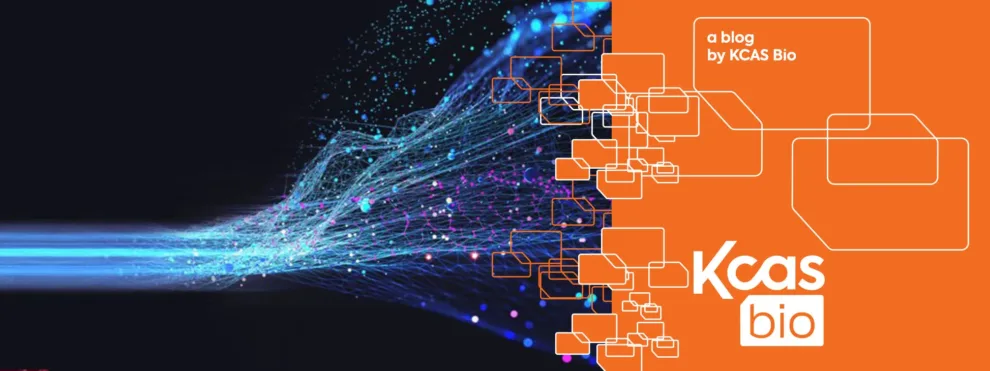As an emerging and growing application, spectral flow offers capabilities beyond what is possible with conventional flow. Its unique capabilities make it a powerful tool for researchers aiming to extract more information from each sample and push the boundaries of discovery. Join us in this post as we explore how cutting-edge advancements in spectral flow cytometry can transform your research.
Spectral Flow
Building upon the core foundation of conventional flow cytometry, spectral flow utilizes specialized cytometers that can detect 40 or more antigens per single cell. Detecting a high number of antigens per cell is possible due to prisms and multiple detectors, which split the fluorochrome light and allow capture of the entire emitted light spectrum. As a result, more fluorochromes can be readily distinguished; thus, more can be used per cell. All of this leads to higher dimensional and more data-rich analyses.
In fact, in this high-parameter analysis, the relative amount of data per sample is increased not linearly but exponentially. Accordingly, data analysis and management are multifaceted and involve careful pre-processing, appropriate data storage, and sophisticated analysis techniques. Expert data analysis requires a robust knowledge of flow cytometry and a solid understanding of topic-specific biology. In short, it is a dynamic and often collaborative process requiring technical and biological expertise.
Advantages of Spectral Flow
Harnessing the power of full-spectrum analysis means performing highly multiplexed experiments and gaining a more nuanced understanding of cell populations. However, the benefits of spectral flow extend beyond just multiplexing capabilities.
Flexibility in Panel Design: Spectral flow cytometry is less constrained by spectral overlap, resulting in greater flexibility in panel design. This flexibility enables the inclusion of additional markers without the limitations imposed by conventional flow cytometry.
At KCAS Bio, our experts leverage this advantage by preparing customizable backbone panels. By maximizing available channels, a backbone panel can be built for core marker, and critical channels can be left open for client-driven customization. Within one panel, there can be broad research applications; this approach maximizes efficiency in both time and budget for our sponsors.
Improved Resolution and Sensitivity: Spectral flow cytometry offers enhanced resolution, allowing better discrimination between closely spaced fluorochromes. This can be especially beneficial when working with dimly expressed markers or populations with subtle differences. The improved sensitivity of spectral flow cytometry makes it well-suited for detecting rare events.
Reduced Compensation Issues: Traditional flow cytometry often requires compensation for spectral overlap and can complicate the analysis process. Because spectral flow cytometry uses the entire emission spectrum for each fluorochrome, the need for compensation is minimized. In spectral flow, reference controls are used for spectral unmixing to separate overlapping fluorescent spectrums and discriminate individual fluorescent signals.
Extraction of Autofluorescence: Cell structure or metabolic components can have autofluorescence that interferes with the proper signal detection of antibody-bound fluorochromes. This is particularly impactful when detecting a lowly expressed antigen or using dim fluorochromes. In conventional flow cytometry, this can be difficult to correct. However, in spectral flow cytometry, the autofluorescence of the unstained cells is included in the spectral unmixing and can be appropriately subtracted.
At KCAS Bio, we’ve leveraged this benefit to improve the data resolution in studies that require a sample matrix or a target cell type known to have high autofluorescence. Where compensation could be challenging with conventional flow, spectral flow cytometry provides an advantageous solution.
KCAS Bio, Your partner for Spectral Flow
The technology for flow cytometry is evolving rapidly; thus, continuous learning and adaptation are crucial. KCAS Bio is committed to using the latest technologies to ensure your research stays at the forefront of scientific advancements. To meet that commitment, in 2023, we added the Cytek Aurora to our technology platform. With five lasers, 40 colors, and 67 parameter detection, this instrumentation has opened the door to our spectral flow offerings.
However, we also recognize that the most significant successes are found when cutting-edge technology is paired with expert scientists. Our team is built with experienced leaders who are well-equipped to develop, optimize, and validate critical assays for you.
While stepping confidently into this new arena, we continue to build upon our firm foundation in conventional flow cytometry. Whether you need assay support using conventional or spectral flow cytometry, KCAS Bio can be your partner of choice.
Let’s talk. Reach out and schedule a discussion today to learn how we can help advance your program.

